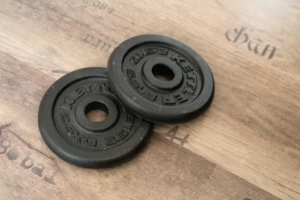Mythbusting Muscle Growth: Debunking Common Hypertrophy Misconceptions
When it comes to building muscle and achieving hypertrophy, fitness enthusiasts and gym-goers are often bombarded with a plethora of advice, theories, and misconceptions that can cloud their understanding of effective muscle-growth practices. From the frequency of training to the optimal number of repetitions, misinformation can lead to frustration and suboptimal results. This article aims to debunk some of the most common misconceptions surrounding muscle growth and provide clarity based on scientific evidence.
Misconception 1: More Is Always Better
Myth: To build muscle, you must train as often and as intensely as possible.
Reality: While it’s true that progressive overload is key for muscle growth, more training doesn’t necessarily equate to better results. Overtraining can lead to fatigue, injury, and setbacks in muscle development. Research indicates that muscles need adequate time to recover and repair after strenuous workouts, which is when growth occurs. Generally, training each muscle group 2-3 times per week with the right intensity and volume is sufficient for most individuals. It’s important to listen to your body and allow for adequate recovery.
Misconception 2: Lifting Heavy Weights is the Only Way to Grow Muscle
Myth: Only lifting heavy weights will lead to hypertrophy.
Reality: While heavy lifting plays a pivotal role in building strength and muscle, it’s not the sole pathway to hypertrophy. Muscle growth can also occur through higher repetitions with lighter weights, particularly when focusing on time under tension (TUT). The key lies in achieving mechanical tension, metabolic stress, and muscle damage—three primary drivers of muscle hypertrophy. Various rep ranges (from low to high) can be effective, and incorporating a blend of both can yield the best results.
Misconception 3: Spot Reduction is Possible
Myth: You can target fat loss in specific areas by training those muscles.
Reality: The concept of spot reduction—losing fat in specific areas of the body through targeted exercises—is largely a myth. Fat loss is a systemic process that occurs throughout the body as a result of a caloric deficit. While you can build muscle in a specific area through targeted exercises, overall fat loss will come from a balanced diet and total-body training. This means that to reveal muscle definition, one needs to focus on overall body composition rather than solely on training the muscles of interest.
Misconception 4: Supplements are Essential for Muscle Growth
Myth: You need expensive supplements to build muscle effectively.
Reality: Supplements can enhance training and recovery, but they are not a substitute for a well-structured diet and training program. Whole foods should form the foundation of any nutrition plan. Adequate protein intake, essential fats, and carbohydrates from real food sources are crucial for muscle repair and growth. Supplements like protein powder or creatine can be useful for some, but they work best when you’re consistent with your diet and training. Always prioritize nutritional quality over supplementation and consult with a healthcare professional before starting any new supplement regimen.
Misconception 5: You Must Feel Sore to Grow
Myth: If your muscles aren’t sore after a workout, you didn’t train hard enough.
Reality: Soreness, or delayed onset muscle soreness (DOMS), is often viewed as a badge of honor among gym-goers but is not a reliable indicator of workout effectiveness or muscle growth. While some level of soreness can result from challenging workouts, muscle growth occurs from stimuli that often extend beyond the feeling of soreness. In fact, with consistent training, individuals may experience less soreness over time as their bodies adapt. Focus on your strength progress and overall workout performance rather than solely on post-workout discomfort.
Misconception 6: Cardiovascular Exercise Hinders Muscle Growth
Myth: Cardio will sabotage your efforts to gain muscle and strength.
Reality: While excessive cardio can interfere with muscle recovery or growth (especially if not paired with adequate calorie intake), moderate cardiovascular exercise can complement a hypertrophy-focused program. Cardio can enhance cardiovascular health, improve recovery, and assist in maintaining a healthy body composition. The key is to find a balance that allows for effective muscle training while still promoting cardiovascular fitness, without compromising recovery time.
Conclusion
Navigating the world of fitness can be challenging, especially given the abundance of myths and misconceptions surrounding muscle growth. An evidence-based approach, grounded in understanding the principles of hypertrophy, is essential for anyone serious about achieving their muscle-building goals. Always remember to combine consistent training with proper nutrition, adequate recovery, and a positive mindset. By dispelling these common myths, you can lay a solid foundation for effective muscle growth and ultimately build the physique you desire.
[modern_footnote_source_link]


























Add Comment